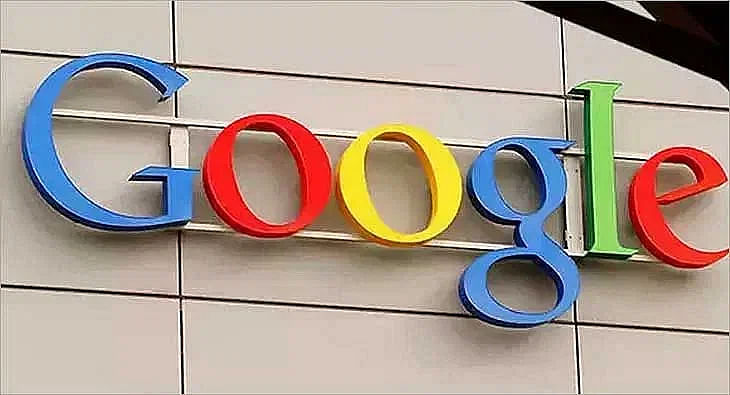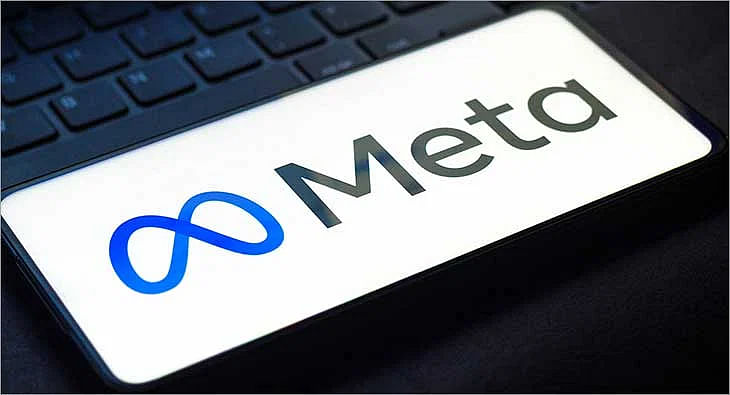Programmatic Advertising: Where the future of digital marketing is headed
As per dentsu e4m Digital Advertising Report 2024, programmatic buying of digital media contributed 42% (Rs 17,088 crore) to digital media industry by 2023-end, experiencing a growth rate of 37%

The recently released dentsu e4m Digital Advertising Report saw digital ad spends in India overtake TV for the first time, even as various verticals invested their ad dollars across digital’s ever widening media. And within digital itself, programmatic advertising saw a strong performance.
According to the dentsu e4m Digital Advertising Report, “Programmatic buying of digital media contributed 42% (Rs 17,088 crore) to the digital media industry by the end of 2023, experiencing a growth rate of 37% over the previous year. We expect this segment to grow at a compounded rate of 27.51%, reaching a share of 45% (Rs 27,782 crore) by the end of 2025.”
Paras Mehta, Business Head - Programmatic Solutions, Interactive Avenues (the digital arm of IPG Mediabrands India), says that within the digital sphere, programmatic advertising comprises slightly above 40%. “While native ads can technically be bought via programmatic channels, overall native ads represent no more than 15% of the total spends.“
“Besides transparency and efficiency, programmatic opens doors for data-driven marketing, massive reach, automation, innovation, and ease of integration with multiple Martech platforms, especially now with third-party cookies going away and the increased importance of first-party data,” he said.
As Tejas Rathod Founder and COO, Mobavenue Media, was quoted as saying in the report, “The meteoric rise of programmatic advertising is not just a trend but a clear indicator of where the future of digital marketing is headed towards automation and intelligence. The ability to use AI to identify and target the right audience is not just about serving ads; it's about creating meaningful connections and delivering value.”
Prashant Deorah (CEO, Puretech Digital), agrees that India’s digital advertising sector is experiencing explosive growth, and this expansion is significantly influenced by the adoption of programmatic advertising, which has revolutionized the way brands approach ad spends, including both individual and programmatic purchases of native ads.
Programmatic advertising's precision in targeting and efficiency in execution allows for a nuanced approach to ad placements, seamlessly integrating native ads into user experiences.
“This dual approach to buying ads, individually for tailored placements and programmatically for scale and efficiency, underscores a strategic shift in advertising, where digital and programmatic avenues are indispensable for brands aiming for impactful engagement,” enthuses Deorah.
According to Mehta, the transformative influence of programmatic advertising is rooted in three key pillars: audiences, real-time signals and technology.
“In essence, programmatic empowers marketers to precisely target the right users, at the right time, and in the right locations, thereby minimizing wastage and maximizing impact. From an advertiser's perspective, programmatic advertising is not about one versus others; rather, it's a strategic shift in centralized media buying and execution. Providing advertisers access to DSP platforms fosters transparency and trust, differentiating it from traditional channels,” he says adding, that beyond just reducing media wastage, programmatic enables precise targeting, reaching the right audience at the right time and place.
This strategic approach is instrumental for all manner of brands in creating a meaningful impact, optimizing campaigns for better ROI through advanced technology and communication strategies. Integration with other crucial Data and Martech platforms further enhances its effectiveness, creating a seamless ecosystem for advertisers that traditional channels might lack.
“Considering these factors, while native ads will continue to play an important role in the lower funnel of marketing efforts, programmatic will continue to grow at a 12%-15% CAGR for the next several years, reaching over 50% of the total digital AdEx,” says Mehta, in line with industry report predictions.
Programmatic advertising unfolds several advantages for publishers. Mehta notes, “Firstly, it serves as an additional revenue stream, broadening their monetization opportunities. By providing a comprehensive audience-based inventory package to marketers, programmatic empowers publishers to offer targeted and relevant advertising space. This not only enhances the overall quality of content delivery but also contributes to a more engaging user experience. Additionally, programmatic allows publishers a guaranteed recovery period of 30 to 60 days, providing a financial buffer.”
Read more news about Digital Media, Internet Advertising, Marketing News, Television Media, Radio Media
For more updates, be socially connected with us onInstagram, LinkedIn, Twitter, Facebook, Youtube, Whatsapp & Google News
BJP spent more than Rs 100 crore on ads since May 2018: Google report
Congress stands second at Rs 45 crore
Listen to This Article
The ruling Bharatiya Janata Party (BJP) has crossed Rs 100 crore in political advertisements on Google and its video platform YouTube, according to media reports. The party has spent more than Rs 101 crore on since May 2018 when Google started publishing the Google Ads Transparency report.
According to a media report, BJP's share in Google ads published between May 31, 2018, and April 25, 2024, is about 26 per cent of the total spending. More than 161,000 of the total 217,992 content pieces (73% share) described as "political advertisement" by Google were published by the BJP during this period.
According to the report, Google's definition of political ads includes ads placed by news organisations, government publicity departments, and even commercial ads featuring actor-politicians.
Congress takes the second spot with 5,992 online advertisements during this period. The party spent Rs 45 crore in the period. Tamil Nadu’s DMKis the third-biggest political advertiser on Google platforms, having spent Rs 42 crore since May 2018.
Tamil Nadu was the top target of political ads on Google, followed by Telangana, Uttar Pradesh, Karnataka, and Madhya Pradesh.
Digital platforms shall not permit usage of user data by third party without consent: Bill
The Draft Digital Competition Bill, 2024 identifies large digital platforms and prescribes various obligations for them aimed at preventing anti-competitive conduct
The draft of India’s Digital Competition Bill, 2024 has been rolled out for public consultation.
The Bill is, ‘an Act, to identify systemically significant digital enterprises (SSDE) and their associate digital enterprises, and to regulate their practices in the provision of core digital services, keeping in view the principles of contestability, fairness and transparency, with an objective to foster innovation, promote competition, protect the interest of users of such services in India, and for matters connected therewith and incidental thereto.’
This Act is called the Digital Competition Act, [2024].
In simpler terms, this bill identifies large digital platforms and prescribes various obligations for them aimed at preventing anti-competitive conduct. It largely addresses the aspects of fair and transparent dealing, self-preferencing, data usage, restricting third party applications among other prohibitions proposed.
What is an SSDE?
According to the draft, an enterprise shall be deemed to be a Systemically Significant Digital
Enterprise in respect of a Core Digital Service, if:
(a) it meets any of the following financial thresholds in each of the immediately preceding three financial years -
(i) turnover in India of not less than INR 4000 crore; OR
(ii) global turnover of not less than USD 30 billion; OR
(iii) gross merchandise value in India of not less than INR 16000 crore; OR
(iv) global market capitalisation of not less than USD 75 billion, or its equivalent fair value of not less than USD 75 billion calculated in such manner as may be prescribed
OR
(b) it meets any of the following user thresholds in each of the immediately preceding three financial years in India:
(i) the core digital service provided by the enterprise has at least one crore end users; OR
(ii) the core digital service provided by the enterprise has at least ten thousand business users.
Obligations on SSDE and their associate digital enterprises
The bill prohibits large digital platforms, identified as Systemically Significant Digital Enterprises (SSDE), from engaging in self-preferencing, restricting third-party apps, imposing anti-steering policies, misusing the data of business users, and bundling products and services.
Key restrictions -
- Fair and Transparent Dealing - An SSDE shall operate in a fair, nondiscriminatory, and transparent manner with end users and business users.
- Self Preferencing - SSDE shall not, directly or indirectly, favour its own products, services, or lines of business, or those of related parties or third-parties with whom the SSDE has arrangements for the manufacture and sale of products or provision of services over those offered by third party business users on the Core Digital Service, in any manner.
- Data usage - An SSDE shall not, directly or indirectly, use or rely on non-public data of business users operating on its Core Digital Service to compete with such business users on the identified Core Digital Service of the Systemically Significant Digital Enterprise.
“Non-public data” shall include any aggregated and non-aggregated data generated by business users that can be collected through the commercial activities of business users or their end users, on the identified Core Digital Service of the Systemically Significant Digital Enterprise.
Additionally, an SSDE shall not, without the consent of the end users or business users intermix or cross use the personal data of end users or business users collected from different services including its Core Digital Service; or permit usage of such data by any third party.
SSDE shall also allow business users and end users of its Core Digital Service to easily port their data, in a format and manner as may be specified.
- Restricting third-party applications - An SSDE should not restrict or impede the ability of end users and business users to download, install, operate or use third-party applications or other software on its Core Digital Services; and allow end users and business users to choose, set and change default settings
- Anti-steering - An SSDE shall not restrict business users from, directly or indirectly, communicating with or promoting offers to their end users, or directing their end users to their own or third party services, unless such restrictions are integral to the provision of the Core Digital Service of the Systemically Significant Digital Enterprise.
- Tying and bundling - An SSDE shall not require or incentivise business users or end users of the identified Core Digital Service to use one or more of the Systemically Significant Digital Enterprise’s other products or services, or those of:
(a) related parties; or
(b) third parties with whom the Systemically Significant Digital Enterprise has arrangements for the manufacture and sale of products or provision of services
Google ad rev stands at $61.6 bn in Q1; $8 bn for YouTube
Alphabet has posted 15% increase in revenue at $80,539 million as compared to last year
Google's Alphabet Inc. has posted total ad revenue of $61,659 million in the quarter ended March 31, 2024, as compared to $54.548 million in the same quarter last year.
The ad revenue for YouTube stands at $8,090 million as compared to last year's $6,693 million.
The tech giant has recorded a net income of $23,662 million.
Alphabet has posted 15% increase in revenue at $80,539 million as compared to last year.
Sundar Pichai, CEO, said: “Our results in the first quarter reflect strong performance from Search, YouTube and Cloud. We are well under way with our Gemini era and there’s great momentum across the company. Our leadership in AI research and infrastructure, and our global product footprint, position us well for the next wave of AI innovation.”
e4m-Teads roundtable today: Experts to explore how CTV is reshaping media
The theme of the roundtable is ‘Navigating the digital tide: How CTV is reshaping media’
Listen to This Article
The exchange4media Group is all set to host the e4m-Teads exclusive roundtable on Friday, April 26 in Mumbai. At the roundtable, industry luminaries and experts will dive deep into the topic ‘Navigating the digital tide: How CTV is reshaping media. In today's advertising ecosystem, Connected TV stands out as a game-changer, offering a level of reach and engagement that is beyond traditional television. Viewers are now turning to streaming platforms for their entertainment needs and serving this purpose, CTV presents a prime opportunity for brands to connect with their target audiences in a more personalized and impactful manner. The theme of the roundtable serves as a roadmap for marketers seeking to thrive in today's competitive market landscape.
At the custom roundtable, experts will share insights on a wide range of topics including significance of CTV in modern advertising, the expansive reach and engagement potential of CTV compared to traditional TV, pivotal role of creative content in driving successful CTV campaigns, explore the challenges and benefits of maintaining creative consistency across CTV, mobile & desktop platforms and decode the concept of personalization in CTV advertising and more.
CTV advertising represents a revolution in how brands engage with audiences, offering opportunities for creativity, personalisation, and growth. Creative content lies at the heart of successful CTV campaigns. By integrating data-driven insights into CTV campaigns, brands can enhance targeting precision and effectiveness, optimising their advertising strategies for maximum impact.
Here’s our line-up of speakers:
- Aayush Arora, Paid and Owned Media Lead, The Estée Lauder Companies
- Amruta Pawar, General Manager - Marketing strategy & Digital Marketing, Hafele
- Arti Saxena, Director and Head of Marketing, India, World Gold Council
- Krishal Mehta, DGM Marketing, Samsonite
- Natasha Kapoor, Strategic Media Planning Lead APAC, Meta
- Priyanka Bisen Shah, Head of Digital Marketing, Bajaj Auto
- Sunita Mandal, Assistant VP- Digital Marketing, Tata AIA.
- Toranj Mehta, Director Marketing, Forevermark- De Beers Group
- Tishya Relia, Digital and DTC Lead – Kérastase India, L'Oréal India
- Pedro Mariani, VP, Strategic Accounts-APAC, Teads
- Riddhi Pimputkar, Director, Enterprise Solutions-India, Teads
T20 World Cup 2024: Disney+ Hotstar assures advertisers reach of over 450 million
The platform is seeking Rs 80 crore for co-presenting sponsorship, Rs 55 crore for powered by sponsorship, and Rs 30 crore for associate sponsorship
Disney+Hotstar has assured advertisers a reach of over 450 million viewers during the month-long upcoming T20 World Cup 2024 through free streaming. The platform has said this in a sales document shared with media agencies and advertisers, which e4m has accessed.
In the document, the platform also mentioned that advertisers can reach 600 million audiences by leveraging cricket & entertainment on Disney+Hotstar.
The men’s cricket tournament T20 WC will be played in West Indies and USA from June 1 to June 29, 2024. Disney Star, in 2022, won the TV and digital rights of all ICC cricket tournaments in India, both men’s and women’s category, till the end of 2027 for USD 3 billion.
As earlier reported by exchange4media, on digital platform- Disney+ Hotstar has three sponsorship tiers, co-presenting priced at Rs 80 crore, powered by for Rs 55 crore and associate sponsorship at Rs 30 crore. The sponsorship price for digital is higher than television. The 10-second rate for midroll for mobile is Rs 35 lakh and for CTV, it's Rs 18 lakh.
As per the document, over 550 million unique users tuned into Disney+Hotstar during CWC '2023 in 48 days while 295 million unique viewers live streamed CWC’23 on the platform.
Disney+ Hotstar has declined to comment on the same.
JioCinema launches ad-free subscription service starting at Rs 29
Family plan is available at Rs 89/month for up to any 4 devices. Sports content including the ongoing IPL will continue to be available for free
JioCinema has announced its new subscription offering, ‘JioCinema Premium’. The new plans, starting at Rs.29/month, will offer an ad-free experience delivered in up to 4K quality and off-line viewing options. Members can access Exclusive Series, Movies, Hollywood, Kids & TV entertainment, on any device, including Connected TVs, JioCinema stated in a release.
With a focus on multi-segment consumption across Indian households, a ‘Family’ plan was also announced at Rs.89/month which offers the additional benefit of 4 simultaneous screens access. Existing JioCinema Premium members will now enjoy all the additional benefits of the ‘Family’ plan at no extra cost.
Sports content including the ongoing Indian Premier League will continue to be available for Free as part of its Ad-Supported offering.
Speaking on the launch of JioCinema Premium, Kiran Mani, CEO, Viacom18 Digital said, “Creating and building an entertainment ecosystem with a product that is made for every Indian household, is not just a business strategy, but a vision to empower our country and users with an unmatched entertainment experience. JioCinema Premium aims to redefine the narrative of premium entertainment for every Indian while building a daily viewing habit.”
He further added, “The introduction of JioCinema Premium breaks the numerous cost and quality barriers that exist in accessing premium entertainment. With 4K streaming, best-in-class audio, offline viewing and no device restriction all at a customer-centric pricing is sure to democratise access to quality entertainment for all of India.”
JioCinema has also rolled out a high-decibel & much-appreciated campaign asking consumers, “Toh Aaj Kya Plan Hai?”. The campaign highlights the core benefits of JioCinema Premium while sarcastically showcasing the distress of today’s consumers when choosing their entertainment plan.
Meta posts 27% jump in Q1 revenue
Meta’s advertising revenue for the quarter stood at $35,635 million as compared to $28,101 million the same quarter last year
Meta Platforms has reported financial results for the quarter ended March 31, 2024.
The platform has posted total revenue of $36.46 billion, a 27% increase from last year.
The advertising revenue for the quarter ended March 31 stood at $35,635 million as compared to $28,101 million the same quarter last year.
Ad impressions delivered across Meta’s family of apps have increased by 20% year-over-year, the tech giant said. The average price per ad has also increased by 6% year-over-year.
Total costs and expenses stands at $22.64 billion, an increase of 6% year-over-year, while capital expenditures, including principal payments on finance leases, were $6.72 billion.
"It's been a good start to the year," said Mark Zuckerberg, Meta founder and CEO. "The new version of Meta AI with Llama 3 is another step towards building the world's leading AI. We're seeing healthy growth across our apps and we continue making steady progress building the metaverse as well.”









 Share
Share

